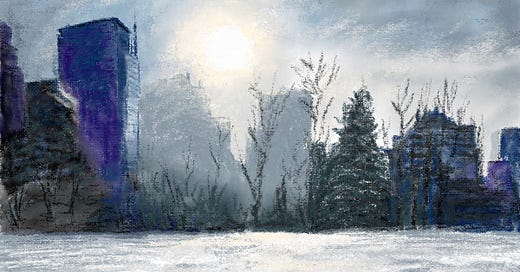When I signed on to do the illustrations for The Perfect Ride back in 2023, this was definitely not the painting setup that I envisioned I’d be using.
Still, as strange as it might sound, discovering a new way of working has been both challenging and exciting. In adapting to working on my back, I have freed myself of one of the major constraints of my di…
Keep reading with a 7-day free trial
Subscribe to Athena’s Art Newsletter to keep reading this post and get 7 days of free access to the full post archives.




